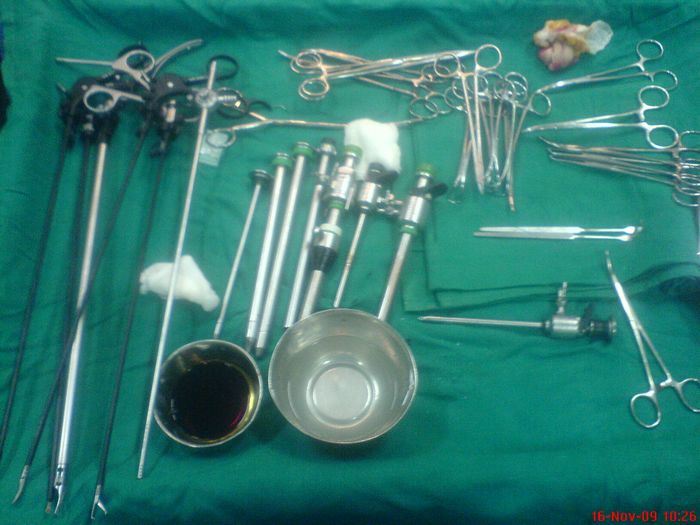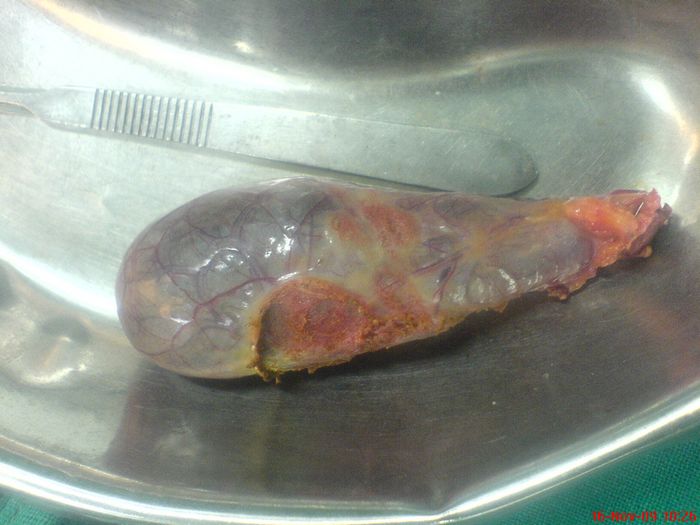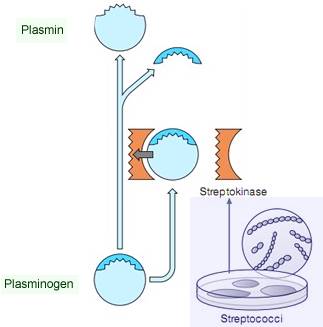Laparoscopic Cholecystectomy: Indication, Steps and Video
Laparoscopic surgery
Due to convenience, Laparoscopic cholecystectomy has now replaced open cholecystectomy as the first-choice of treatment for gallstones and inflammation of the gallbladder unless there are contraindications to the laparoscopic approach.
Several small incisions in the abdomen to allow the insertion of operating ports, small cylindrical tubes approximately 5-10 mm in diameter, through which surgical instruments and a video camera are placed into the abdominal cavity.
The camera illuminates the surgical field and sends a magnified image from inside the body to a video monitor, giving the surgeon a close-up view of the organs and tissues. The surgeon watches the monitor and performs the operation by manipulating the surgical instruments through the operating ports.
Laparoscopic cholecystectomy is now the gold standard for the treatment of symptomatic gallstone disease. It is most commonly performed Minimal Invasive Surgery by General surgeon’s world wide.
Common Indications are:
- Cholelithiasis
- Mucocele gall bladder
- Empyema ball bladder
- Cholesterosis
- Typhoid carrier
- Porcelain gallbladder
- Acute Cholecystitis (calculous and acalculous)
- Adenomatous gall bladder polyps
- As part of other procedures viz. Whipple’s procedure
Advantage of laparoscopic approach:
- Cosmetically better outcome.
- Less tissue dissection and disruption of tissue planes
- Less pain postoperatively.
- Low intra-operatively and postoperative complications.
- Early return to work.
Pre-operative Investigations:
Apart from routine pre-operative investigations, in fit patients, the only investigations needed are ultrasound examination, although practiced in some centers; intravenous Cholangiography may not be confirmative and is attended with the risk of anaphylactic reactions.
Relative contra-indications:
- Complicated Cholecystitis.
- Poor risk for general anaesthesia.
- Some cases of previous extensive abdominal surgery.
- Patients with severe cardiac diseases and COPD should not be considered a good candidate for laparoscopy. The laparoscopic cholecystectomy may also be more difficult in patients who have had previous upper abdominal surgery. The elderly may also be at increased risk for complications with general anaesthesia combined with pneumoperitoneum.
- Patient position:Patient is operated in the supine position with a steep head-up and left tilt once the pneumoperitoneum has been established.
- Position of Surgical team:The surgeon stands on the left side of the patient with the scrub nurse-camera holder-assistant.
Procedure:
- Preparation of the patient.
- Creation of pneumoperitoneum.
- Insertion of ports
- Diagnostic laparoscopy
- Dissection of visceral peritoneum
- Dissection of Calot’s triangle
- Clipping and division of cystic duct and artery
- Dissection of gallbladder from liver bed.
- Extraction of gallbladder and any spilled stone.
- Irrigation and suction of operating field.
- Final Diagnostic laparoscopy.
- Removal of the instrument with complete exit of CO2.
- Closure of wound.


Complications:
Early complication:
- Common bile duct injury
- Bile leak
- Injury to viscera
- Hemorrhage
- Retained stones and abscess formation
Late complication:
- Biliary strictures
- Cystic duct clip stones
- Hemorrhage
Here is a link to the book: Safe cholecystectomy A to Z by V K Kapoor.



3 Comments
Which is better Lap Chole or Open Chole looking at the success rate?
Sabina,
If you look through mortality rates:
Lap chole is better than Open Chole
A total of 78.7% of the 30,968 patients who underwent cholecystectomy as a principal procedure in New York State in 1996 underwent laparoscopic cholecystectomy. The mortality rate was lower for laparoscopic cholecystectomy than for the open procedure (0.23% vs 1.90%, P < .0001) But For successful extraction of gall bladder: Open chole is better.
As Lap Chole may end in Open chole and not all GB is possible to be removed by lap chole.
So it depends on what success rate refers to
Thank you all for comments. We are encouraged to write better articles.
Comments are closed.